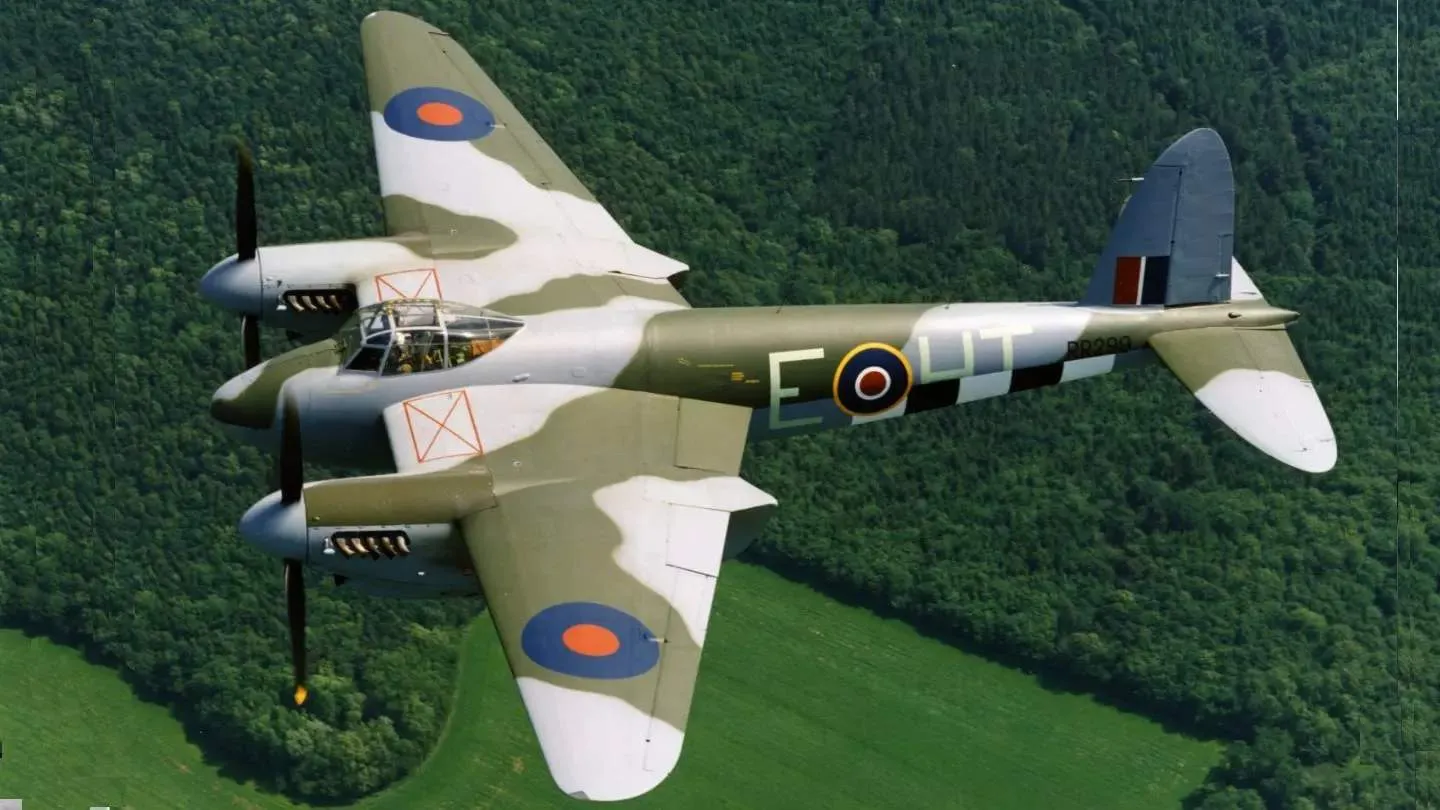The De Havilland Mosquito Spy Plane: From Blueprint to WWII Victory
The Mosquito was a rebel, a rule-breaker, and a game-changer that helped defeat Nazi Germany - one of the most celebrated planes in history along with the Spitfire and North American P-51 Mustang.
The de Havilland Mosquito was a marvel of aircraft engineering: impossibly sleek, blindingly fast, built of lightweight wood, and equipped with a formidable arsenal of weaponry. Britain’s Royal Air Force didn’t realize it needed the spy plane until it became impossible to imagine a WWII victory without the Mosquito and its two growling Rolls-Royce Merlin engines.
Not only did the ‘Mossie’ excel as a night fighter, but it served as a pathfinder for Bomber Command's heavy bombers. And when it came to daring bombing raids over occupied Europe, the Mossie was unmatched in its ability to surprise, speed, and precision - a reputation solidified by an audacious daylight bombing raid on Berlin.
So when Churchill's top-secret Special Operations Executive Army (SOE) set out to destroy the Gestapo HQ in Copenhagen, there was only one machine for the job - the Mosquito.

The Mosquito’s radical design
The Mosquito was initially nicknamed ‘Freeman’s Folly’, a reference to Air Chief Marshal Sir Wilfrid Freeman who defied critics and defended Geoffrey de Havilland's revolutionary design concept.
De Havilland argued that shortages of aluminum and steel would occur during WWII, but wood supplies should be adequate. “We believe that we could produce a twin-engine bomber which would have a performance so outstanding that little defensive equipment would be needed,” de Havilland wrote to Freeman on September 20, 1939.
Only weeks earlier, Britain had declared war on Nazi Germany to defend the balance of power in Europe. The Air Ministry decided de Havilland’s idea too radical, but Freeman stuck to his guns. The Mosquito’s design was flexible so a crew of two - pilot and navigator - could sit side-by-side and a single passenger could ride in the aircraft's bomb bay if necessary.
“Flying on operations barely 18 months after a single prototype was ordered off the drawing board, it was the answer to its pilots' prayers: a stunningly versatile warplane capable of leaving the Luftwaffe in its wake to attack when and where the enemy was least expecting it,” Rowland White writes in Mosquito: The RAF's Legendary Wooden Wonder.
Although best known for its RAF service, the Mossie flew in several US Army Air Force units as a night fighter and photographic/weather reconnaissance aircraft. During the war, the USAAF acquired 40 Canadian Mossies and flew them under the American F-8 (photo reconnaissance) designation.

"The brand new social experience where you activate your gaming skills as you train like a spy."
- TimeOut
Take on thrilling, high-energy espionage challenges across different game zones.

Operation Carthage
By late 1944, the Danish resistance movement in Copenhagen, Denmark was in danger of being wiped out by the Gestapo, leading the Allies to mount Operation Carthage - one of WWII’s most audacious attempts at precision bombing.
A joint operation involving British, Australian, and New Zealand air forces was launched in March 1945 that included 20 Mosquitoes from RAF 2nd Tactical Air Force. The goal was to destroy Gestapo HQ in Copenhagen, where Danish resistance leaders and classified intelligence were being held, as well as disrupting nearby German naval operations. While Operation Carthage achieved its goal, some raiding crews hit a school, resulting in the deaths of more than 100 students and teachers.
Despite the tragic cost of civilian lives, Operation Carthage was viewed as a significant blow to the German war effort, preventing a devastating Nazi last stand that could have prolonged the war for many months. The six-year war ended on September 2, 1945.
.webp)
Of the almost 8,000 Mosquitoes built in Britain, Canada, and Australia, there are still about 30 non-flying Mosquitoes around the world including a preserved Mosquito in the US Air Force Museum.
The largest collection of Mosquitoes is at the de Havilland Aircraft Museum in England, which owns the prototype, W4050, the only initial prototype of a WWII British aircraft design in existence in the 21st century.
SPYSCAPE+

Join now to get True Spies episodes early and ad-free every week, plus subscriber-only Debriefs and Q&As to bring you closer to your favorite spies and stories from the show. You’ll also get our exclusive series The Razumov Files and The Great James Bond Car Robbery!


Gadgets & Gifts
Explore a world of secrets together. Navigate through interactive exhibits and missions to discover your spy roles.
Your Spy Skills
We all have valuable spy skills - your mission is to discover yours. See if you have what it takes to be a secret agent, with our authentic spy skills evaluation* developed by a former Head of Training at British Intelligence. It's FREE so share & compare with friends now!
* Find more information about the scientific methods behind the evaluation here.


Stay Connected
Follow us for the latest
TIKTOK
INSTAGRAM
X
FACEBOOK
YOUTUBE